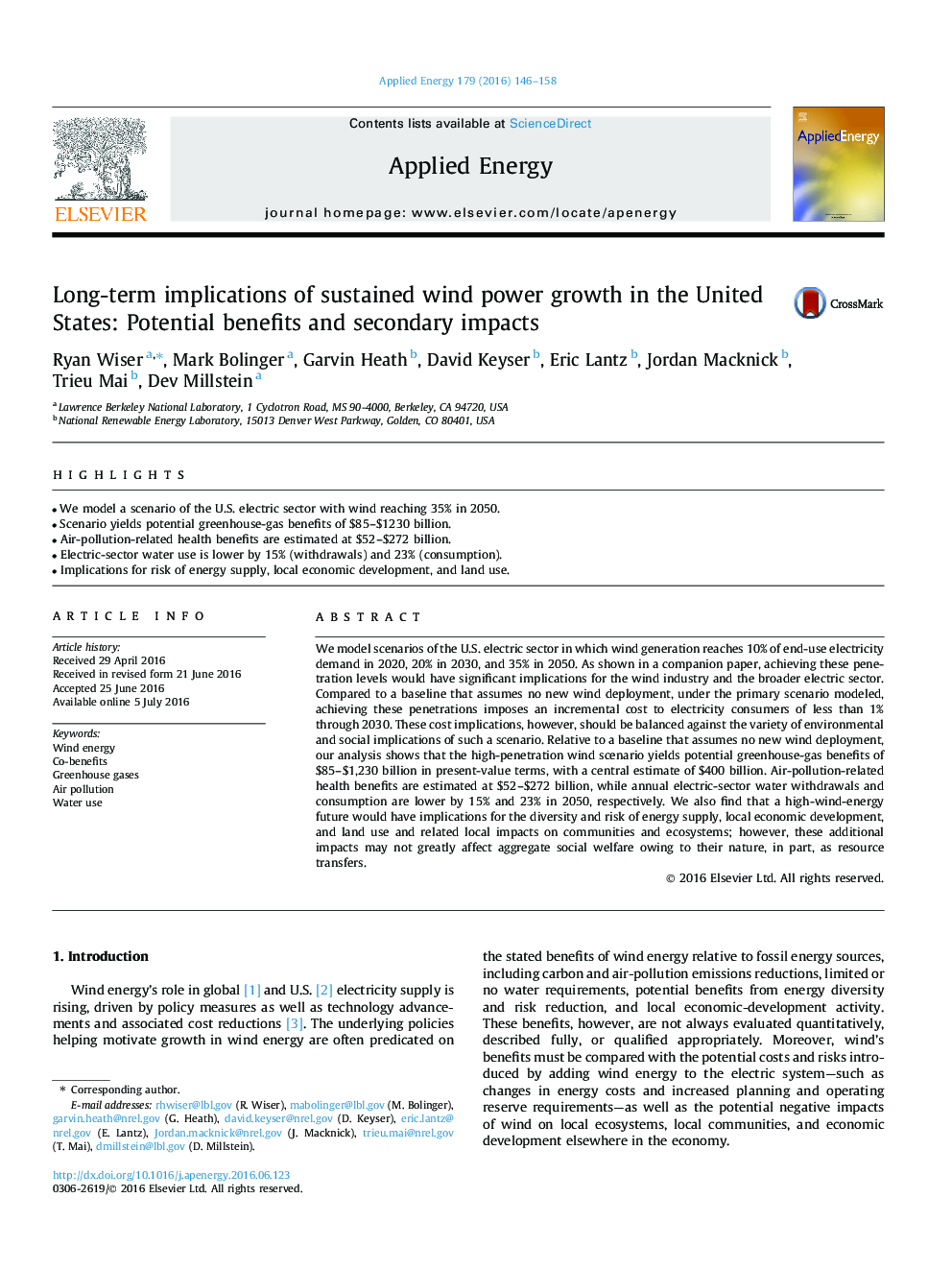| Article ID | Journal | Published Year | Pages | File Type |
|---|---|---|---|---|
| 6682053 | Applied Energy | 2016 | 13 Pages |
Abstract
We model scenarios of the U.S. electric sector in which wind generation reaches 10% of end-use electricity demand in 2020, 20% in 2030, and 35% in 2050. As shown in a companion paper, achieving these penetration levels would have significant implications for the wind industry and the broader electric sector. Compared to a baseline that assumes no new wind deployment, under the primary scenario modeled, achieving these penetrations imposes an incremental cost to electricity consumers of less than 1% through 2030. These cost implications, however, should be balanced against the variety of environmental and social implications of such a scenario. Relative to a baseline that assumes no new wind deployment, our analysis shows that the high-penetration wind scenario yields potential greenhouse-gas benefits of $85-$1,230 billion in present-value terms, with a central estimate of $400 billion. Air-pollution-related health benefits are estimated at $52-$272 billion, while annual electric-sector water withdrawals and consumption are lower by 15% and 23% in 2050, respectively. We also find that a high-wind-energy future would have implications for the diversity and risk of energy supply, local economic development, and land use and related local impacts on communities and ecosystems; however, these additional impacts may not greatly affect aggregate social welfare owing to their nature, in part, as resource transfers.
Related Topics
Physical Sciences and Engineering
Energy
Energy Engineering and Power Technology
Authors
Ryan Wiser, Mark Bolinger, Garvin Heath, David Keyser, Eric Lantz, Jordan Macknick, Trieu Mai, Dev Millstein,
